
In early November, simulation engineers and professionals from across China gathered at the COMSOL Conference 2017 Beijing. More than 70 guests presented their simulation work during the conference presentation sessions. Attendees voted for their favorite posters and three of them earned Best Poster awards. Read on to learn how these posters stood out among a collection of innovative and inspiring projects.
The COMSOL Conference 2017 Beijing Featured 70+ Innovative Presentations
There were more than 70 simulation projects presented at the COMSOL Conference 2017 Beijing, and 54 of them were posters. The content of these simulation and engineering works covers applications of the COMSOL Multiphysics® software in various industrial and academic fields.
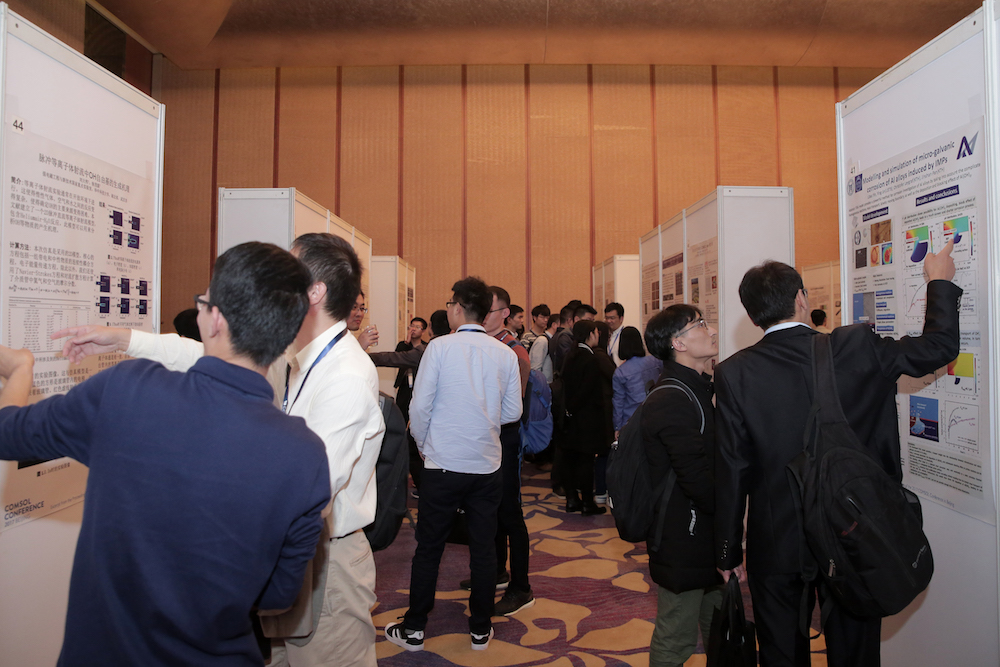
Attendees taking a look at some of the conference posters.
It was tough to choose “the best” posters among numerous excellent works, but in the end, research teams from the State Key Laboratory of Tribology, Tsinghua University; Zhejiang Electro-Acoustic R&D Center; and the Institute of Electrical Engineering, Chinese Academy of Science (CAS) each received Best Poster awards. Let’s congratulate the winners!

From left to right: Svante Littmarck, CEO of COMSOL, Inc.; Lichun Shi, State Key Laboratory of Tribology, Tsinghua University; Xiao Lu, Zhejiang Electro-Acoustic R&D Center; and Wenxiu Sun, Institute of Electrical Engineering, CAS.
Top Posters at the COMSOL Conference 2017 Beijing
“Simulation of the Dynamic Wetting Process of Droplets”
A research team from State Key Lab of Tribology, Tsinghua University won a Best Poster award for “Simulation of the Dynamic Wetting Process of Droplets“.
The spreading of liquid droplets on rigid flat surfaces is a universal phenomenon and usually happens in a time scale from milliseconds to seconds. To explain the effect of viscosity on the initial spreading of droplets, the research group from Tsinghua University built a two-dimensional axisymmetric model and simulated the shear rate distribution of droplets at the spreading front. Then, they used the Level Set method to simulate the dynamic wetting process.
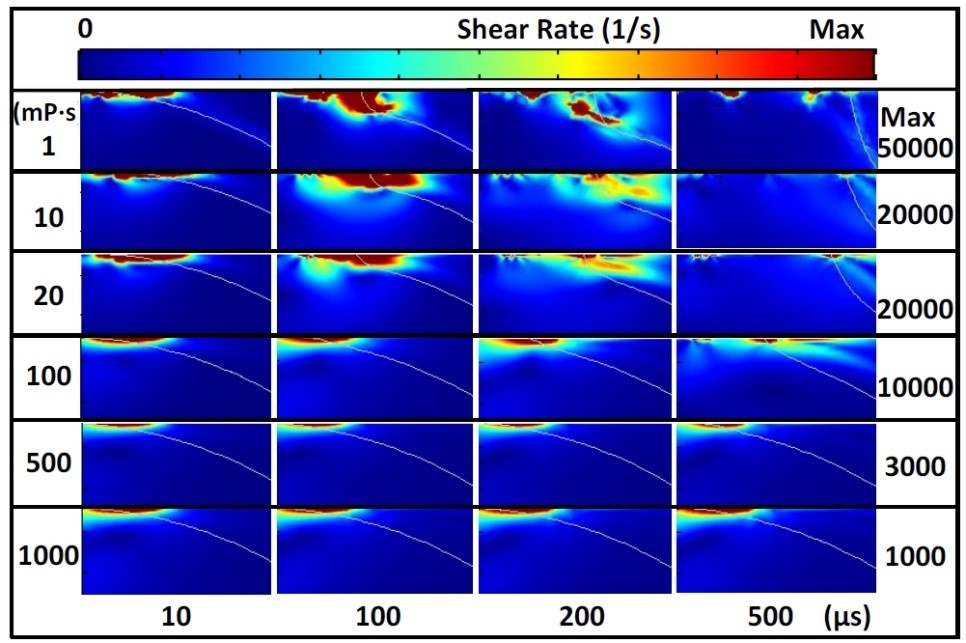
The evolution of the shear rate contour for liquids with different viscosities as a function of spreading time. Image courtesy State Key Laboratory of Tribology, Tsinghua University.
The simulation results show that the viscous force is high at the start of the spreading process, even for low-viscosity liquids. This behavior is due to a high local shear rate at the spreading front.
“Numerical Simulation Analysis of Loudspeaker”
A research team from Zhejiang Electro-Acoustic R&D Center won a Best Poster award for “Numerical Simulation Analysis of Loudspeaker”.
The application of electroacoustic devices, like loudspeakers, has permeated our everyday lives. Although the structure of a loudspeaker looks simple, its working principle involves various physical domains, including mechanics, electromagnetics, vibration, acoustics, and thermal conductance. Therefore, the numerical simulation analysis of a loudspeaker is a multiphysics coupling topic.
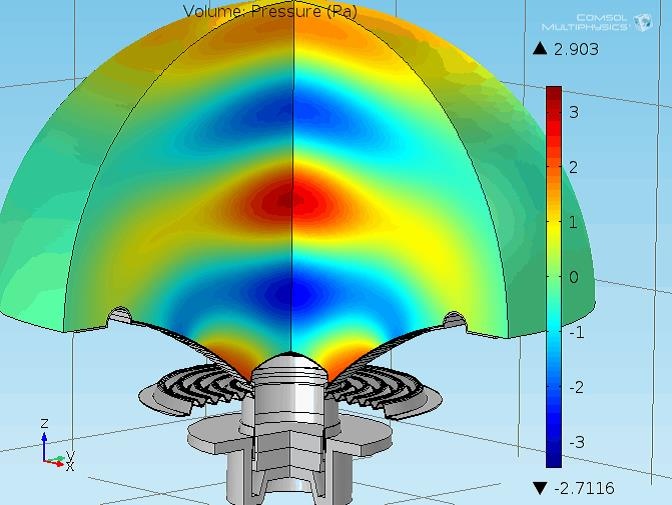
The transmission of sound waves in a loudspeaker. Image courtesy Zhejiang Electro-Acoustic R&D Center.
By using the COMSOL® software to conduct multiphysics coupling analyses on loudspeakers, the R&D team from Zhejiang Electro-Acoustics not only obtained the sound pressure level and impedance of the loudspeaker, but also analyzed all of the physical features, including the magnetic circuit, vibration system, and sound field. Then, the team established a simulation analysis method for the characteristics of the whole speaker system.
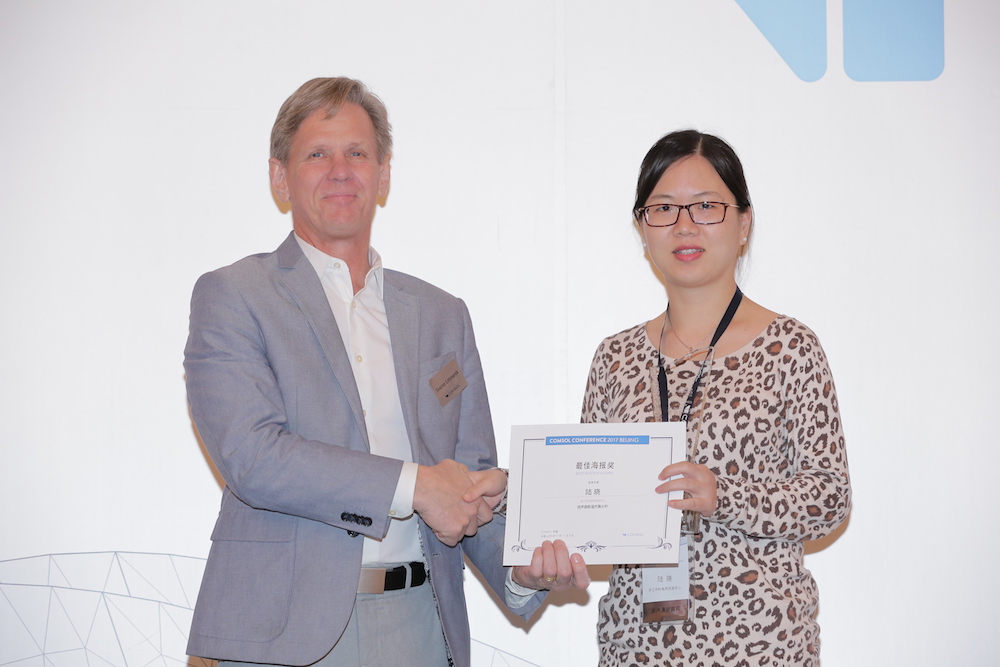
Svante Littmarck (left) presents the Best Poster award to Xiao Lu (right), a senior engineer from Zhejiang Electro-Acoustic R&D Center.
“The Application of Electromagnetic Ultrasonic Numerical Simulation Based on COMSOL in Nondestructive Testing”
The third Best Poster award was given to the joint research team from the Institute of Electrical Engineering at CAS and Hebei University of Technology in recognition of their research based on nondestructive testing in the poster “The Application of Electromagnetic Ultrasonic Numerical Simulation Based on COMSOL in Nondestructive Testing“.
In order to solve the defect detection issue of nonferrous metal plates, the research team established a finite element model of an ultrasonic transmitter and electromagnetic transducer to analyze the simulation signals received by coils when the position of the defect differed. As in a solid medium, the longitudinal wave velocity is the largest, followed by the transverse wave velocity. The surface acoustic wave velocity is the smallest.
Longitudinal waves are the farthest from the sound, followed by transverse waves and the surface waves. According to the velocity difference in several types of acoustic waves, the position of the defect can be located. The longitudinal wave, shear wave, and surface wave can be clearly distinguished in the figure below.
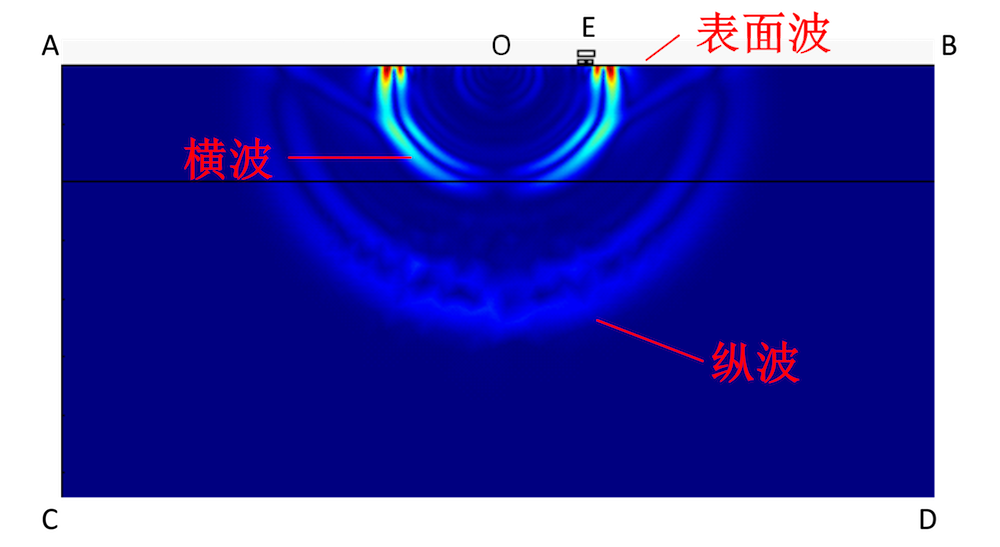
Cloud map of surface wave displacement, when t = 1.58 µs. Image courtesy of Institute of Electrical Engineering, Chinese Academy of Science.
The research team then calculated the wave velocity according to the time of each peak and the receiving point spacing, and compared their findings with theoretical values to verify the feasibility of the detection method.
See You Next Year in Shanghai
If you are ready to show off your simulation research, submit to the COMSOL Conference 2018 in Shanghai. Perhaps you will even win an award!
The call for presentations for the COMSOL Conference 2018 Shanghai, held on November 1–2, 2018, will open soon. Receive updates about the conference by signing up for save-the-date reminders.

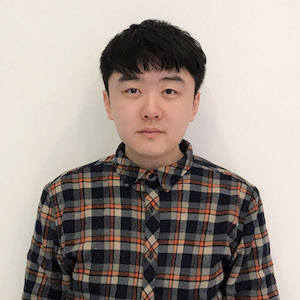

Comments (0)